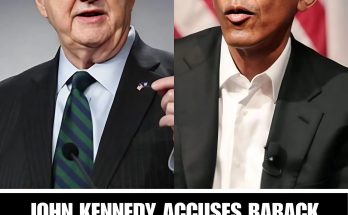They called it rivalry. The video calls it revision. At its core, this story is not about two men in the same jersey; it’s about a war for memory, the way legacies are built, edited, and sometimes—quietly—replaced. In the clip you shared, the narrator frames Vanessa Bryant as the custodian finally lifting the lid on years of pressure points between Kobe Bryant and LeBron James: a cold competitiveness that hardened into resentment, a league hungry for a “next,” a media machine that crowned a successor before the reigning king had finished the game.

The claims come fast. They say Kobe saw the rewrite starting early—those years when he was still dragging a battered body through 4 a.m. workouts, still parading parades down Figueroa—and yet the conversations on television were already elsewhere. Is LeBron better than Kobe? Has LeBron surpassed Kobe? The video says Kobe began muting the TV when those segments rolled, not out of pettiness, but because it felt like having his flowers stolen before the funeral. It lands with brutal irony; it also explains the tension coiled inside a single line LeBron once said on camera: “Me and Kobe never had a real relationship either.” Warm words later came—You’re a Laker now. Family.—but that admission hangs in the air like an unfinished verse.
The film paints Kobe as a man who believed greatness was earned with blood and repetition, not headlined into existence. It insists he bristled at the red carpet rolled out for LeBron in Los Angeles, the way the organization and the league machinery shifted their center of gravity. Pride, not hatred, the video argues—pride and the ache of being replaced while you’re still close enough to hear your name echo in the rafters. When LeBron passed Kobe on the all-time scoring list—Philadelphia, January 25, 2020—the video asserts that Kobe watched stone-faced, tweeted his respect, and felt the eraser moving across his page. A day later, the crash came, and with it a silence nobody knew how to carry.
From there, the narrative widens into a larger war for legacy. The video says Kobe saw the writing on the wall with shoes and marketing, that he wanted Mamba to stand alone because he felt his brand was being sunset in favor of a still-rising sun. It presents Vanessa as the executor of that conviction—guarding creative control, vetoing versions of Kobe that felt corporate instead of true. In this telling, she becomes more than a widow; she’s the firewall. She says no when “no” is sacrilege, she refuses softened edits, she pulls the story back to the work: broken fingers reset and taped, a thousand small humiliations swallowed, the merciless arithmetic of 4 a.m.
There are sharper edges, too—alleged private comments, journals, the idea that Kobe didn’t despise LeBron the person so much as what he represented: a system that rewards hype over hunger, narrative over knife-edge will. The video leans into that thesis with receipts from the culture—think-pieces, rankings, anniversary packages where Kobe is in the frame but not centered, tribute posts that feel perfunctory, congratulations that read more like captions than confessions. It posits that Vanessa noticed the pattern and started circling it in red.
But then the film does something interesting: it reframes Kobe’s feuds—Shaq, the Celtics, Duncan’s quiet empire—not as gossip, but as fuel. It argues that conflict was Kobe’s forge; that every slight, every elbow, every headline he thought misread him became a brick in the road he built under his own feet. In that light, the supposed distance from LeBron becomes less a grudge and more a boundary. Kobe wasn’t asking anyone to love him. He was demanding they remember him accurately.
And how do you remember a man like that? The video’s answer is Vanessa. It follows her into the work—Mambasita, WNBA courtside, the gear done right, the scholarships, the insistence on showing girls what a standard looks like. It points to athletes who carry a slice of Kobe into their rituals: armbands, ink, mantras scrawled in Sharpie on shoes. The argument is simple: headlines fade, but habits don’t. You can give the crown to whoever sells the moment; you can’t fake the catechism of 4 a.m.
By the end, the clip stops talking about GOAT math entirely and starts talking about guardianship. It suggests—again, through sources and anonymous confidants—that Kobe wanted a torch passed on his terms: less about numbers, more about mentality. It claims there was a final conversation, a handshake without warmth, a sense of closure that wasn’t kindness so much as clarity. Whether every detail is provable or not, the story’s emotional arc is unmistakable: Vanessa isn’t engineering a feud; she is refusing an erasure.
So the lights go down and the reel ends where it began: with a man muting a television. Not because he was small, the video insists, but because he was big—and tired of hearing smaller versions of himself echo back. The last image is Vanessa at a lectern, speaking his real language: love as labor, excellence as daily devotion, legacy as something you fight for, not something you inherit. No call-outs. No forced unite-the-eras montage. Just a sentence that feels like a verdict: Kobe doesn’t need rewriting. He needs remembering.
And maybe that’s the point the film is really making. Not that Kobe “hated” LeBron, but that he loved the work so fiercely he rejected any narrative that skipped steps. In a league addicted to the next headline, Vanessa—at least as this video frames her—chooses a harder, slower way: protect the pages, tell the truth in full sentences, and let the myth earn its breath the same way he did.



